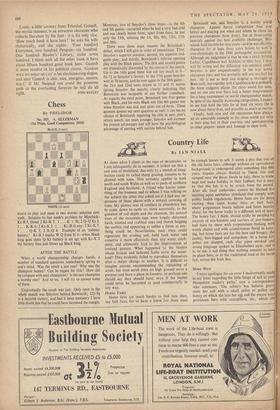Country Life
By IAN NIALL
AT times when I climb to the tops of mountains, as I not infrequently do in summer, it strikes me that a vast area of wasteland, that only by a stretch of imag- ination could be called sheep grazing, remains to be planted with trees. This certainly applies in both north and south Wales as well as to parts of northern England and Scotland. A friend who knows some- thing of the business and to whom I was talking on the subject the other day asked me if I. had any im- pression of these places with a natural covering of trees. My picture was of conifers in abundance but, to come down to earth or, more accurately, to the question of soil depth and the elements, the natural trees of the mountain tops were largely deformed birch, stunted and crabbed oaks and thorns hugging the surface and appearing as unlike a forest as any- thing could be. Nevertheless, such trees could regenerate the eroding soil, hold back water and conserve it more effectively than any water catch- ment, and ultimately lead to the improvement of lowland pasture. What happened to the birches whose broken and lichened limbs strew the moor- land? They evidently failed to reproduce themselves after a major change in weather. It is difficult to imagine anyone recommending the replanting of scrub, but even scrub trees on high ground serve a purpose and have a place in forestry, or perhaps one should say they should have, even if the timber could never be harvested or used commercially in any way.






























 Previous page
Previous page